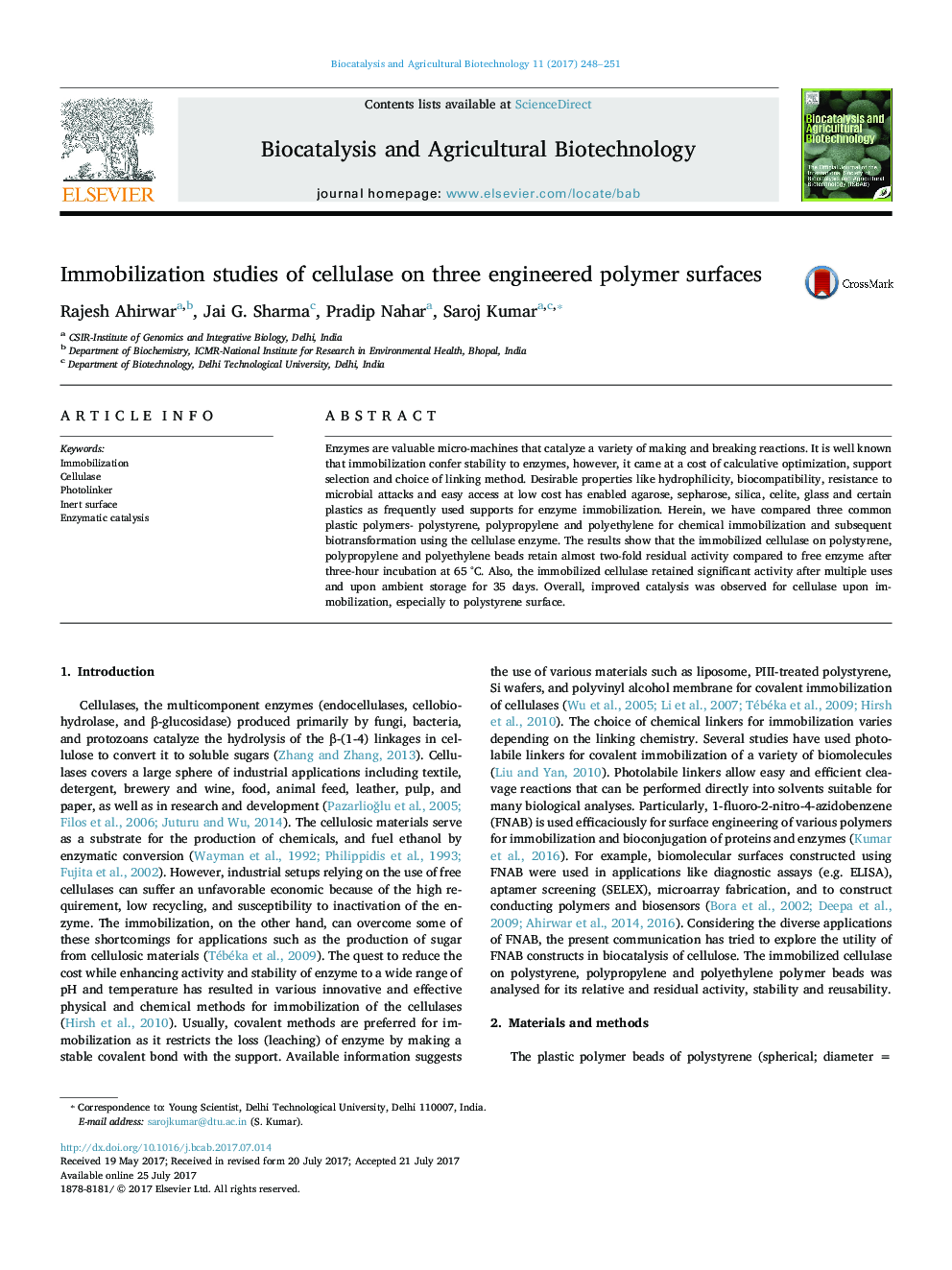| Article ID | Journal | Published Year | Pages | File Type |
|---|---|---|---|---|
| 5520527 | Biocatalysis and Agricultural Biotechnology | 2017 | 4 Pages |
â¢Immobilization of cellulase to polystyrene, polypropylene and polyethylene beads is studied.â¢Immobilized enhances the activity and stability of cellulase.â¢Single step labelling is used for bioconjugation of cellulase to inert plastic polymers.â¢Polystyrene bound cellulase showed superior enzyme kinetics and stability.
Enzymes are valuable micro-machines that catalyze a variety of making and breaking reactions. It is well known that immobilization confer stability to enzymes, however, it came at a cost of calculative optimization, support selection and choice of linking method. Desirable properties like hydrophilicity, biocompatibility, resistance to microbial attacks and easy access at low cost has enabled agarose, sepharose, silica, celite, glass and certain plastics as frequently used supports for enzyme immobilization. Herein, we have compared three common plastic polymers- polystyrene, polypropylene and polyethylene for chemical immobilization and subsequent biotransformation using the cellulase enzyme. The results show that the immobilized cellulase on polystyrene, polypropylene and polyethylene beads retain almost two-fold residual activity compared to free enzyme after three-hour incubation at 65 °C. Also, the immobilized cellulase retained significant activity after multiple uses and upon ambient storage for 35 days. Overall, improved catalysis was observed for cellulase upon immobilization, especially to polystyrene surface.
